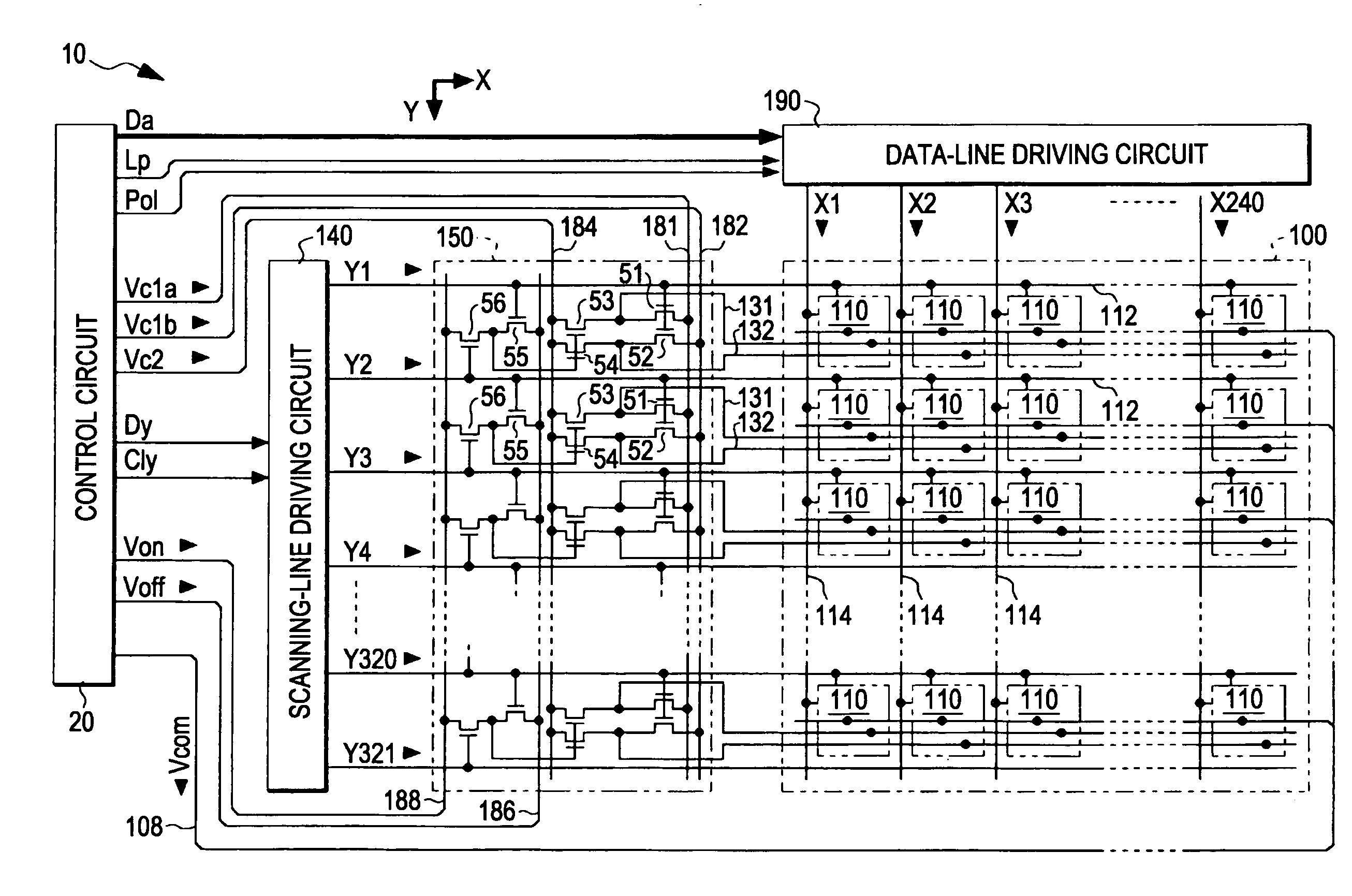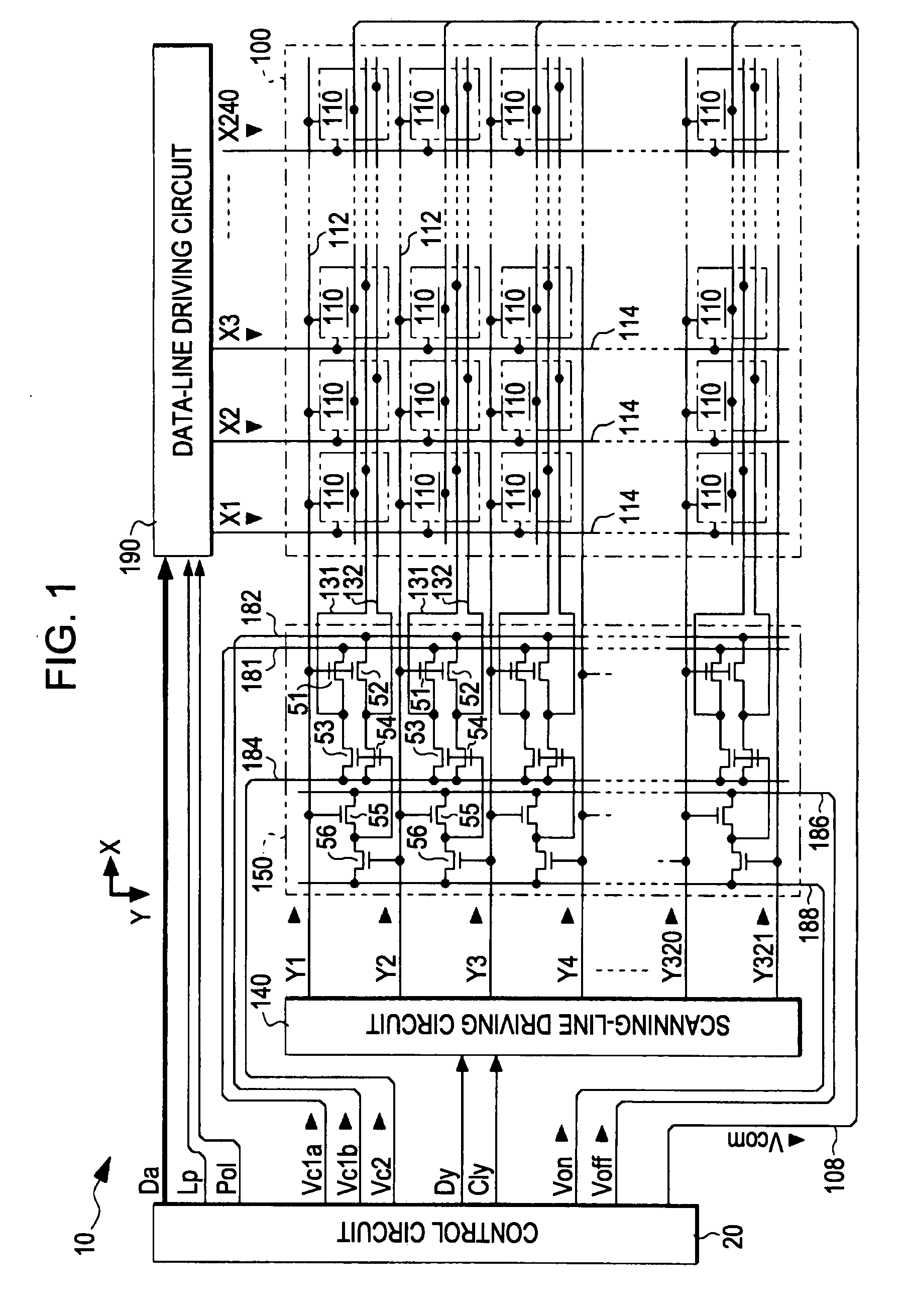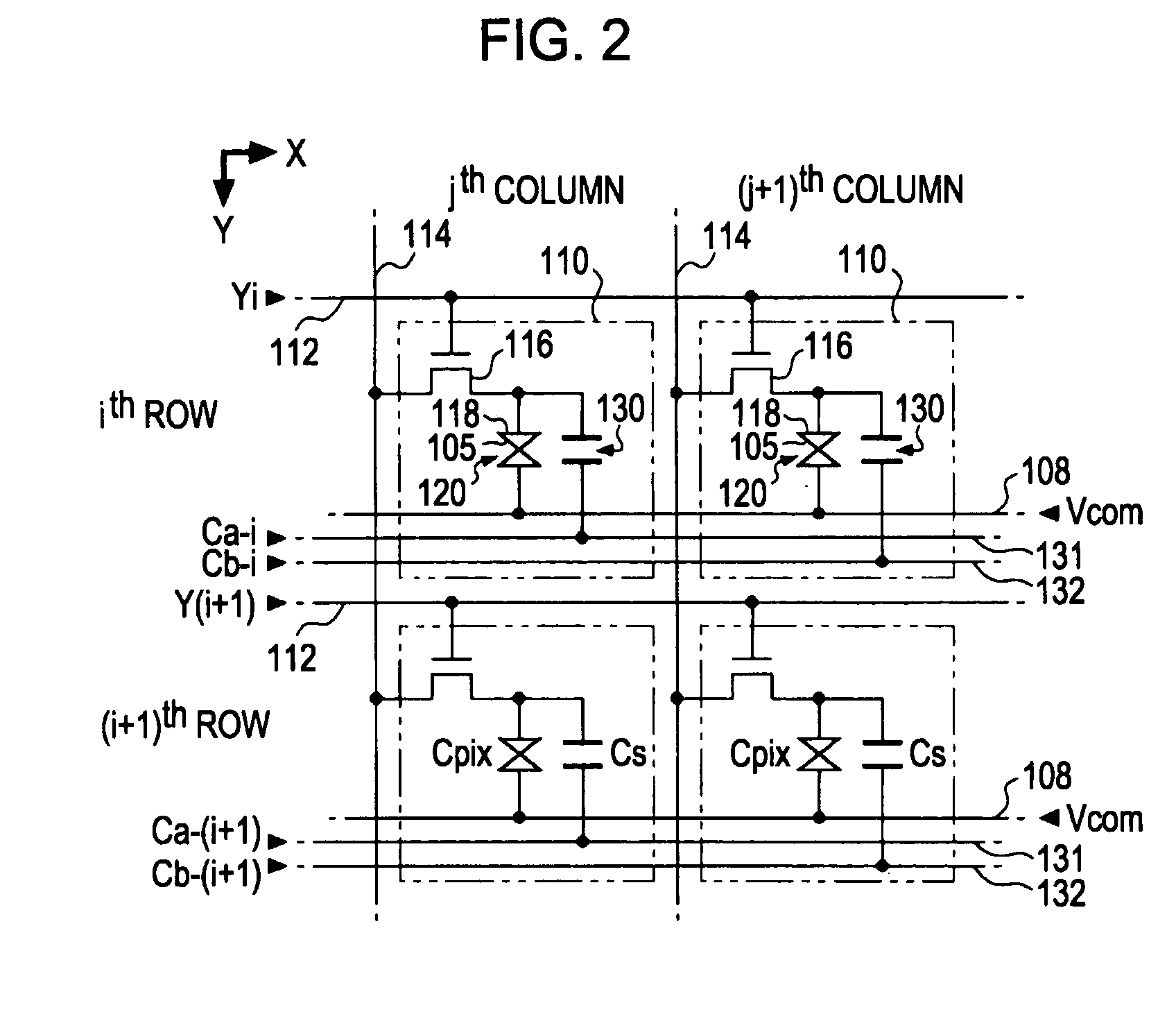Electrooptic device, driving circuit, and electronic device
- Summary
- Abstract
- Description
- Claims
- Application Information
AI Technical Summary
Benefits of technology
Problems solved by technology
Method used
Image
Examples
first embodiment
[0038]A first embodiment of the invention will first be described. FIG. 1 is a block diagram of an electrooptic device according to a first embodiment of the invention.
[0039]As shown in the diagram, the electrooptic device, denoted at 10, has a display region 100, and a control circuit 20, a scanning-line driving circuit 140, a capacitor-line driving circuit 150, and a data-line driving circuit 190 around the display region 100. The display region 100 has an array of pixels 110, in which 321 scanning lines 112 extend transversely (in the X direction) and 240 data lines extend longitudinally (in the Y direction). The pixels 110 are disposed at the intersections of the first to 320th scanning lines 112 and the first to 240th data lines 114. Accordingly, in this embodiment, the pixels 110 are arrayed in a 320 by 240 matrix in the display region 100. The invention is not however limited to that matrix.
[0040]In this embodiment, the 321st scanning line 112 does not contribute to the verti...
second embodiment
[0158]A second embodiment of the invention will be described. FIG. 14 is a block diagram of an electrooptic device according to the second embodiment; and FIG. 15 is a plan view of the boundary between the capacitor-line driving circuit 150 and the display region 100 of the device substrate.
[0159]The second embodiment is different from the first embodiment shown in FIG. 1 (FIG. 3) in the following points: the configuration of the capacitor-line driving circuit 150 (a first difference); there is no third feed line (a second difference); the relationship between the line to which the second end of the storage capacitor 130 is connected and the capacitor line (a third difference); and the common signal Vcom applied to the common electrode 108 is not constant in voltage (a fourth difference).
[0160]The second embodiment will be described centering on these differences.
[0161]The first and second differences will first be described. The capacitor-line driving circuit 150 of the second embo...
PUM
 Login to View More
Login to View More Abstract
Description
Claims
Application Information
 Login to View More
Login to View More - R&D
- Intellectual Property
- Life Sciences
- Materials
- Tech Scout
- Unparalleled Data Quality
- Higher Quality Content
- 60% Fewer Hallucinations
Browse by: Latest US Patents, China's latest patents, Technical Efficacy Thesaurus, Application Domain, Technology Topic, Popular Technical Reports.
© 2025 PatSnap. All rights reserved.Legal|Privacy policy|Modern Slavery Act Transparency Statement|Sitemap|About US| Contact US: help@patsnap.com



